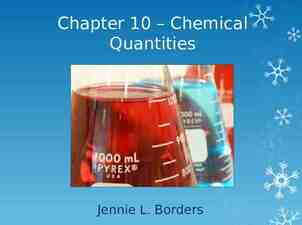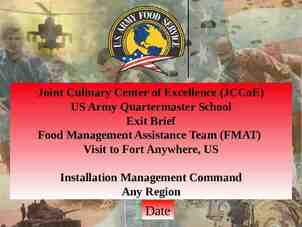Dr. Christianne J.M. Bruschke, Dr. A. Schudel OIE Scientific and
53 Slides1.78 MB

Dr. Christianne J.M. Bruschke, Dr. A. Schudel OIE Scientific and Technical Department, Paris, France Eradicating Animal Influenza Viruses at their Source The FAO-ACPHA/OIE regional avian influenza economic assessment workshop 26-29 September 2005 Bali www.oie.int

Outline of the Presentation OIE objectives Why eradication at the source? OIE International Standards OFFLU GF-TADs and GLEWS www.oie.int

Why standards necessary international public good safety of international trade fewer disease outbreaks harmonisation of national legislation and control measures fewer unjustified restrictions fairer trade benefits to developing countries www.oie.int

Control of High Pathogenic AI at the animal source Virus reservoir provides risk for pandemic Elimination of the virus at the source of eminent importance Animal Health issues must have highest priority in combating the AI crisis www.oie.int

A Realistic Goal Stepwise and phased disease control program for each country Short, medium and long term frame Progressively shift the majority of infected countries to “freedom from infection in defined compartments” Ensure that free countries remain free www.oie.int

Critical issues for Avian Influenza control Early warning, detection and response Standards for disease/infection detection disease/infection prevention animal movements and trade animal and virus destruction production and use of vaccination Collaboration of OIE, FAO and WHO www.oie.int

The OIE early warning system www.oie.int

HPAI subtype H5N1 in South-East Asia www.oie.int

Outbreaks of Avian influenza in Asia (type H5) (as of 1 September 2005) 2,000 1,800 1,600 1,400 1,200 1,000 800 600 400 200 0 1,118 a di o b am 216 55 15 .o ep f) R AR s S ’ ( e pl ng o o e K (P g a n n o hi H C C 1,838 8 4 PR C) s ne o d In ia n pa a J K 19 1 t hs k a az an K ea or (R ) of . ep www.oie.int os a L 50 10 1 a M sia y la R si us a la ai h T nd m na t e Vi

OIE International Standards for Avian Influenza Terrestrial Animal Health Code - mammals, birds and bees Chapter 2.7.12 Appendix 3.8.9 Manual of Diagnostic Tests and Vaccines for Terrestrial Animals Available at www.oie.int www.oie.int

Terrestrial Animal Health Code To avoid introduction of pathogens without using unjustified sanitary barriers Gives trading recommendations to the Chief Veterinary Officers of the OIE Member Countries Provides guidelines for disease surveillance www.oie.int

Update chapter 2.7.12 on Avian Influenza Update Chapter, taking most recent scientific findings into consideration (2004) Development of specific risk-based recommendations for most important commodities being traded Differentiate restrictions between HPAI and LPAI to encourage transparent reporting www.oie.int

Recent events: Expert ad hoc group on pathogenesis and transmission (November 2004) Expert ad hoc group on epidemiology and surveillance (November 2004) Terrestrial Animal Health Standards Commission (January 2005) www.oie.int

Avian Influenza (Ch. 2.7.12) Definition Poultry HPAI free NAI free, free establishment Commodity trading recommendations Compartmentalization Surveillance (with and without vaccination) Clinical Virological Serological www.oie.int

Notifiable avian influenza (NAI): is defined as an infection of poultry caused by any influenza A virus of the H5 or H7 subtypes or by any AI virus with an intravenous pathogenicity index (IVPI) greater than 1.2 or www.oie.int

NAI viruses can be divided into highly pathogenic notifiable avian influenza (HPNAI) and low pathogenicity notifiable avian influenza (LPNAI) www.oie.int

HPNAI viruses have an IVPI in 6week-old chickens greater than 1.2 or,, cause at least 75% mortality in 4-to 8-week-old chickens infected intravenously. www.oie.int

H5 and H7 viruses which do not have an IVPI of greater than 1.2 or cause less than 75% mortality in an intravenous lethality test should be sequenced to determine whether multiple basic amino acids are present at the cleavage site of the haemagglutinin molecule (HA0) for similarities to known HPNAI isolates. www.oie.int

LPNAI are all influenza A viruses of H5 and H7 subtype that are not HPNAI viruses. www.oie.int

Poultry is defined as ‘all birds reared or kept in captivity for the production of meat or eggs for consumption, for the production of other commercial products, for restocking supplies of game, or for breeding these categories of birds’. www.oie.int

NAI status (Ch. 2.7.12) The NAI status of a country, zone or compartment HPAI free HPAI infected NAI free zone or compartment Guidelines for trade of poultry and poultry products www.oie.int

Guidelines for Surveillance (app. 3.8.9) Defines principles and provides a guide for Disease Surveillance To seek recognition for a declared free NAI status Maintenance or following outbreak With or without vaccination Application can be made for a country, zone or compartment www.oie.int

Surveillance Strategies Random surveillance Statistically based surveys Serological testing followed by virological methods for confirmation Targeted surveillance Aimed at high risk groups Serological and virological methods concurrently www.oie.int

Surveillance Strategies Detection of clinical signs of NAI at the flock level Important for HPNAI Strategies Clinical followed by serological surveillance or Serological followed by clinical surveillance www.oie.int

Surveillance: Vaccinated flocks Strategy dependent on the type of vaccine used Inactivated whole AIV Hemagglutinin expression-based vaccines DIVA Sentinel birds Unvaccinated, permanently identifiable www.oie.int

OIE Manual of Diagnostic Tests and Vaccines for Terrestrial Animals The Manual is a companion volume of the Code. The purpose is to facilitate international trade in animals and animal products by describing internationally agreed upon laboratory methods for diagnosis and requirements for the production and control of vaccines. www.oie.int

Diagnostic Techniques Identification of the Agent Assessment of pathogenicity Serology Developing techniques new interpretation and definition of notifiable AI www.oie.int

Vaccines Existing standard based on traditional inactivated vaccine use of subtypes homologous to the outbreak, but normally low pathogenicity subtypes new DIVA strategies can reduce mass culling recombinant vaccines have a place www.oie.int

Animal Welfare Animal welfare is included in the strategic plan of OIE Animal welfare concerns Guidelines on killing for disease control Guidelines on slaughter, including religious Guidelines on land transport www.oie.int

Zoning and Compartmentalisation (Ch 1.3.5) To establish and maintain a subpopulation with a different health status within the national borders Zoning: separation by natural or artificial geographical barriers Compartmentalisation: separation via a biosecurity management system www.oie.int

Zoning and Compartmentalisation Benefits Allows a stepwise approach to disease control in a country May encourage the efficient use of resources May allow safe trade in certain commodities due to functional separation www.oie.int

Principles for definition of a zone or compartment Establishment by the veterinary administration The animals belonging to the subpopulation should be clearly recognisable The measures necessary to preserve distinct health status must be defined and appropriate to the disease www.oie.int

Sequence of steps in definition of zone or compartment Exporting country defines the zone or compartment Identifies animals and has a valid traceability in place Defines the standard operating procedures (eg biosecurity manual) Provides the information to the importing country www.oie.int

Sequence of steps in definition of zone or compartment Importing country determines whether it accepts the zone or compartment Evaluates the Vet Services of the exporting country Makes risk assessment Takes own health status into account Takes OIE standards into account www.oie.int

Sequence of steps in definition of zone or compartment Importing country Rejects Requests further information Recognises Formal agreement between both parties www.oie.int

Factors for the evaluation of the zone or compartment Definition Epidemiologic separation from potential sources of infection (physical or biosecurity) Standard operating procedures in place Permanent supervision and assessment by Veterinary Services Surveillance for the agent / disease Diagnostic capabilities Notification and emergency response www.oie.int

OIE/FAO Network for Avian Influenza (2005) OFFLU www.oie.int

OIE/FAO Network for Avian influenza OFFLU To offer veterinary expertise to Member Countries to assist in the control of AI To develop research on avian influenza (AI) To collaborate with the WHO Influenza Network on issues relating to the animalhuman interface www.oie.int

Structure OFFLU Steering Committee Secretariat: Dr I. Capua, OIE reference laboratory Padova Scientific Committee: experts with international repute with proven lab expertise and/or field experience Team of Scientific Collaborators Scientists having first hand experience, national and regional expertise in lab work, epidemiology or field control www.oie.int

Scientific Collaborators Invited to participate from as wide a field as possible Terms of Reference Liaise with Sc.C. to advise in management, control and eradication of AI Promote the collection of strains for identification Assist in training for lab diagnosis and field surveillance Promote linkages between diagnostic labs in poor countries with industrialized countries www.oie.int

OFFLU: main priorities Exchange of virus isolates and sequence data among reference and diagnostic labs Exchange of Scientific information Communication with member countries and international organisations Provide advice and expertise to infected countries Monitor vaccine trials www.oie.int

Global Framework for the Control of Transboundary Animal Diseases New Agreement between the OIE and the FAO (Paris, 24-05-2004) It replaces a previous 50 years old agreement www.oie.int

GF-TADs Strengthens complementarities and synergies of OIE / FAO Early warning systems Collection and analysis of the animal health information Design and implementation of strategies for disease control Promotion of research www.oie.int

Regional Support Units ECO/ SAARC GCC OIRSA IICA PAHO PACEAU/IBAR ASEAN SADC www.oie.int

GF-TADs Regional immediate objectives Regional nodes for Epidemiological analysis and Early Warning Improvement of Veterinary Services (public and private) National and Regional capacity building for early detection and response, collection of samples, primary diagnostic www.oie.int

GF-TADs Regional immediate objectives Laboratories/surveillance through Networks: teams, Regional and National Laboratories and Epidemiology Units Surveillance for primary endemic areas Pilot disease control programs Influence on national policy makers Design of National Projects/Advocacy Promotion www.oie.int

GF-TADs Regional Outputs Coordinating strategies at regional level (Asia: ASEAN, ASEAN 3, ASEAN SEAFMD, SAARC, SPC) regional GF-TADs Steering Committees, regional conferences definition of policies coordination of national and regional programmes. www.oie.int

GF-TADs National Objectives Global and regional policies GF-TADs operative implementation Support to Veterinary Services - Early detection and response to disease outbreaks National diagnostic laboratories Policies of compensation for farmers Vaccination implementation when relevant National, regional and international disease notification Collection and sharing of virus samples www.oie.int

Concepts and key epidemiological aspects of GF-TADs Disease and Infection at the animal SOURCE (early detection and response) Upstream investigation, Networks an integrated approach. GLobal Early Warning System FAO-OIEWHO www.oie.int

OIE-WHO-FAO Global Early Warning System A major component of GF-TADs Assist in predicting and preventing animal livestock disease threats Epidemiological analysis Additional factors www.oie.int

OIE, FAO WHO Outbreak Tracking Systems FAO data, AH Official information OIE data, AH Official information OIE, FAO WHO Global Early Warning System Other FAO and UN data, Urgent Intervention Immediate Response Trend Analysis Prediction Targeted Capacity Building and Strengthening VS www.oie.int

GF-TADs Depends on strong complementary partnership: commitment of member countries Financial resources Ambitious program www.oie.int

World Organisation for Animal Health created in 1924 in Paris www.oie.int






